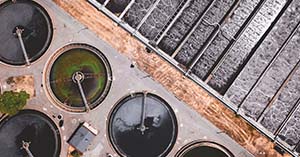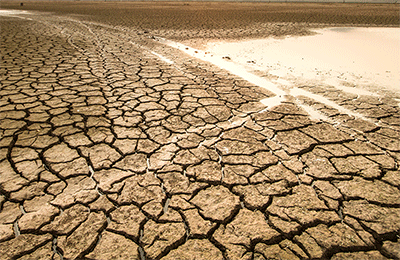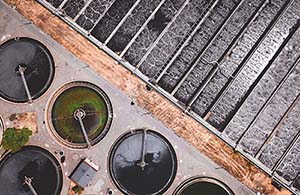

How to Build a Smart Water Network.
In the fast-evolving smart water market, sourcing productive information on the state of the market can be a huge challenge. Between the introduction of new government initiatives and the impact of COVID-19, opportunities to optimise water usage are emerging more and more. There’s no disputing that the introduction of smart water networks is moving from nice-to-have to must-have to futureproof our environmentally conscious cities.
Factors such as improvements to system performance, like leakage and pressure management, as well as network operations and water quality monitoring, mean smart water networks have the potential to save utilities by up to $12.5 billion a year across the globe. The optimisation these networks allow informs decision makers about the allocation of capital expenditures, stimulating dramatic savings as a result of the real-time data provided by the smart water network.
This industry-wide topic has inspired the likes of Badger Meter and Sensus to release a dedicated report delving further into what the introduction of smart water networks really means for the industry. Keen to dig deeper into this myself, I invited a panel of guests to join me on a webinar as part of our CM Industrial series “The Future of Smart Cities”.
Slavco Velickov, Advancement Director of the Water Industry at Bentley Systems, David Lloyd-Owen, Fund Adviser & Consultant at Pictet Asset Management, and Gavin van Tonder, Executive Director of Water at NEOM, joined me to discuss the realities of building a smart water network with me in some more detail.
What is a smart water network?
A smart water network is an integrated set of products, solutions and systems that enable utilities to monitor and diagnose problems. Once integrated, a central system uses data to prioritise jobs and manage maintenance issues, optimising all aspects of the water distribution network remotely and continuously.
Fund Adviser & Consultant at Pictet Asset Management, David Lloyd-Owen, commented:
A smart water network is as smart as the users and the managers.
We are still living in an era of artificial intelligence, which does not have secondary consciousness and therefore relies on secondary conscious beings. Humans put in what they want out of it.
Genuine smart networks - which are starting to emerge in some utilities - are where we are really considering how we integrate the information. And are we gathering data for the sake of data, or do we really have genuine objectives behind getting hold of this data? So, the more thought put into it, the smarter the network.”
Do we already have the technology to implement smart water networks?
It’s not often we can say the technology available is ahead of the human capability of those providing it. However, in the case of effective use of smart water systems, this could well be the case. As Gavin van Tonder, Executive Director of Water at NEOM, mentioned:
There’s plenty of technology out there, but it is poorly used. Let’s look at a smart water meter, which covers temperature, pressure, flow rates… 99% of the people use it for a meter reading. They don’t even use it for leakage protection.
However, there is also a lack of standard APIs for communications that would really help the industry grow. Having proprietary communication protocols limits you and what sensors you can connect. So, opening it up to having a 5G communication modules and not having a bespoke network would be very helpful to us.”
But it’s not just the misuse of technologies, the specific facets to build an effective network are certainly available. But, as Gavin mentions, the software provided to effectively utilise these systems faces difficulty when it comes to collaboration.
“Then with central software, there’s so many software solutions. But they’re very rarely end-to-end: from SCADA systems all the way through to smart meters, et cetera.
So, is few and far between from the software perspective and you maybe need six different software to provide a smart water system. There’s a lack of, let’s say a global design which is a challenge.”
What is the role of the regulator?
So, who oversees the integration of this innovation? The regulator is ultimately responsible for uniting all necessary functions, but it’s clear doing so brings hurdles of its own. Slavco Velickov, Advancement Director of the Water Industry at Bentley Systems, mentions the crucial aspect of pre-optimisation.
“Water companies have to be cost effective. You cannot exist if you’re making losses for a couple of years. So, regulatory bodies should have different mechanisms to minimise the impact of customers on the environment, be cost effective and implement some digital processes inside the water companies to become more effective and efficient.
Many of the water utilities are going to face shortages in terms of operating staff. So, how do we deal with that? Probably digitalisation. So, we can digitalise processes. And this is where the regulatory body should play an important role. Your KPI should be also measured in terms of digitalisation, as well as a service interruption, leakage rates and so on.”
What’s next?
So, what does this mean for the water industry and what are the next steps to ensure optimum success? We discussed this, and loads more, in the full webinar recording. To access more key insights from my guests, as well as a range of additional industry experts and leaders, download our exclusive PDF right here.
To watch the rest of the week of ‘The Future of Smart Cities’ webinars, click here. Or to discuss any of the points mentioned here, or in the wider water industry, drop me a message at lyle.king@industrial-cm.com or connect with me on LinkedIn.
Recommended.

How do we Solve our Global Crisis of Water Scarcity?
To discuss solutions to the global water scarcity challenge I invited experts Nick Bognanno, Chandra Mysore, and Sabine Stuiver to join me on a live webinar, as part of our ‘Future of Smart Cities’ series. Click to read more.

How to Build a Smart Water Network.
There’s no disputing that the introduction of smart water networks is moving from nice-to-have to must-have to futureproof our environmentally conscious cities. I invited leaders in the space to discuss the future of smart water.

How Waterproof is Industry 4.0?
Industry 4.0 is the new industrial revolution. The digitalisation of systems to optimise production processes as a result of integrating collaborative technologies. But what does it really mean for water?

How to Build a Smart Water Network.
What impact will smart cities have on the future of the water industry? And how do we go about creating smart water networks for these cities? Click to find out from our webinar.
Comments.